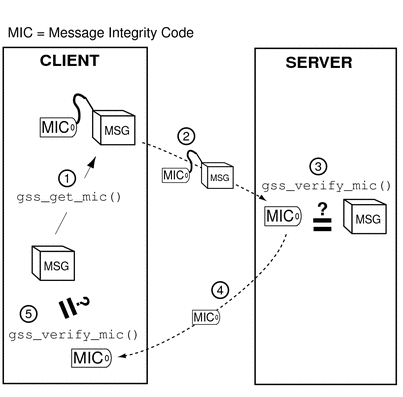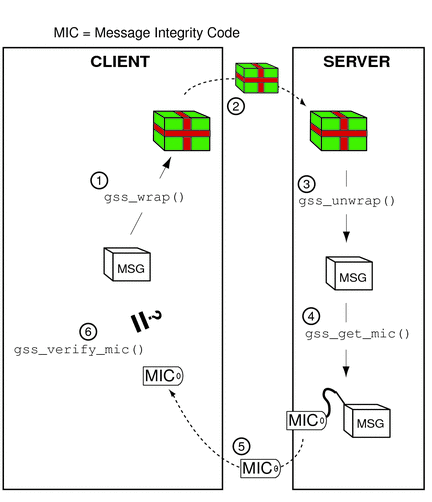Confirming Message Transmission in GSS-API
After the recipient has unwrapped or verified the transmitted message, a confirmation can be returned to the sender. This means sending back a MIC for that message. Consider the case of a message that was not wrapped by the sender but only tagged with a MIC with gss_get_mic().
-
The initiator tags the message with gss_get_mic().
-
The initiator sends the message and MIC to the acceptor.
-
The acceptor verifies the message with gss_verify_mic().
-
The acceptor sends the MIC back to the initiator.
-
The initiator verifies the received MIC against the original message with gss_verify_mic().
The process, illustrated in Figure 4–9, is as follows:
Figure 4–9 Confirming MIC Data

In the case of wrapped data, the gss_unwrap() function never produces a separate MIC, so the recipient must generate it from the received and unwrapped message.
-
The initiator wraps the message with gss_wrap().
-
The initiator sends the wrapped message.
-
The acceptor unwraps the message with gss_unwrap().
-
The acceptor calls gss_get_mic() to produce a MIC for the unwrapped message.
-
The acceptor sends the derived MIC to the initiator.
-
The initiator compares the received MIC against the original message with gss_verify_mic().
The process, illustrated in Figure 4–10, is as follows:
Applications should deallocate any data space that has been allocated for GSS-API data. The relevant functions are gss_release_buffer(3GSS), gss_release_cred(3GSS), gss_release_name(3GSS), and gss_release_oid_set(3GSS).
Figure 4–10 Confirming Wrapped Data

- © 2010, Oracle Corporation and/or its affiliates
